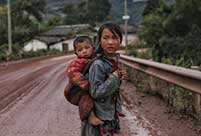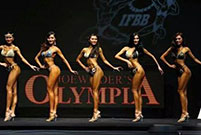

WASHINGTON, Dec. 29 -- A series of cases in which U.S. police officers shot dead black civilians but were not indicted over the past year have again raised doubts over their excessive use of deadly force and racial discrimination.
On Monday, a grand jury in Cleveland, Ohio, decided not to charge Timothy Loehmann, a white police officer who shot and killed a 12-year-old black teenager on Nov. 23, 2014, after having been hearing evidence and testimony since mid-October.
Tamir Rice was holding a replica handgun when Loehmann, who responded to a 911 emergency call about a man pointing a gun at people in a local recreation center, reached a park next to the center in a squad car driven by his partner, Frank Garmback. Garmback was acquitted, too.
Loehmann shot Rice within seconds of reaching the park and Rice died the next day.
"Simply put, given this perfect storm of human error, mistakes and miscommunications by all involved that day, the evidence did not indicate criminal conduct by police," Cuyahoga County Prosecutor Tim McGinty told a news conference.
Police radio personnel gave officers a description of the suspect's clothing but did not convey that a 911 caller had said the suspect was probably a juvenile and the gun may not be real. Those errors "were substantial contributing factors to the tragic outcome," McGinty said.
Rice's family said they were "saddened and disappointed" by the grand jury's decision "but not surprised." They accused the prosecutor of "abusing and manipulating the grand jury process to orchestrate a vote against indictment."
In Chicago, Bettie Jones, 55, a mother of five, and Quintonio LeGrier, 19, a college student, were shot dead by police on Saturday.
Police said LeGrier was being combative. They said Jones was killed by accident and extended condolences.
LeGrier's father said his son had mental health issues and that he called the police early in the morning because his son had threatened him with a metal baseball bat.
"We're thinking the police are going to service us, take him to hospital. They took his life," said LeGrier's mother, Janet Cooksey.
LeGrier's family demanded to know why police used lethal force. It is not clear whether there is any video footage of the shootings.
The shootings came amid ongoing scrutiny of police across the United States after high-profile killings of black people by police officers since mid-2014 triggered waves of protest nationwide and fueled a civil rights movement -- Black Lives Matter.
The Chicago Police Department is already under a federal civil rights investigation that will look into patterns of racial disparity in the use of force, how the department disciplines officers and handles misconduct accusations.
That investigation was launched after last month's release of police dashboard camera video showing white officer Jason Van Dyke shooting 17-year-old black teenager Laquan McDonald 16 times in October 2014. The delay in releasing the video made many believe cover-up on the police side.
U.S. police nationwide have long been accused of exercising racial discrimination in fighting crimes.
A total of 965 American civilians were shot and killed by U.S. police in 2015, and unarmed black men were six times as likely as whites to be shot dead by police, a Washington Post report said Sunday.
Only 9 percent of the shootings, or 90 cases, involved unarmed civilians, but the victims were disproportionately black, according to the Post's analysis.
Although black men make up only 6 percent of the U.S. population, they account for 40 percent, or 36 cases, of the unarmed people shot to death by police in 2015.
The Post also found that a hugely disproportionate number -- three in five -- of those killed by police after exhibiting less threatening behavior were black or Hispanic.
 Are these the world’s scariest landing strips?
Are these the world’s scariest landing strips? In pics: Left behind children in China
In pics: Left behind children in China Eight modern day engineering marvels of China
Eight modern day engineering marvels of China Chinese beauty with sexiest bottom
Chinese beauty with sexiest bottom Charming female bodybuilders of Chengdu University
Charming female bodybuilders of Chengdu University Polish sports stars strip off for risqué calendar
Polish sports stars strip off for risqué calendar Spectacular aerial photos of the Three Gorges
Spectacular aerial photos of the Three Gorges Contestants of Mrs. Globe pose for photo in Shenzhen
Contestants of Mrs. Globe pose for photo in Shenzhen
 Bikini models attend hot pot banquet in Hefei
Bikini models attend hot pot banquet in Hefei Top 20 hottest women in the world in 2014
Top 20 hottest women in the world in 2014 Top 10 hardest languages to learn
Top 10 hardest languages to learn 10 Chinese female stars with most beautiful faces
10 Chinese female stars with most beautiful faces China’s Top 10 Unique Bridges, Highways and Roads
China’s Top 10 Unique Bridges, Highways and Roads Laowai Internet sensations
Laowai Internet sensations Comfort women deal will not aid Tokyo
Comfort women deal will not aid Tokyo Parents demand air purifiers be installed in schools, not all successful
Parents demand air purifiers be installed in schools, not all successful A sign of disaffection, rural worship of Chairman Mao is treated with caution
A sign of disaffection, rural worship of Chairman Mao is treated with cautionDay|Week